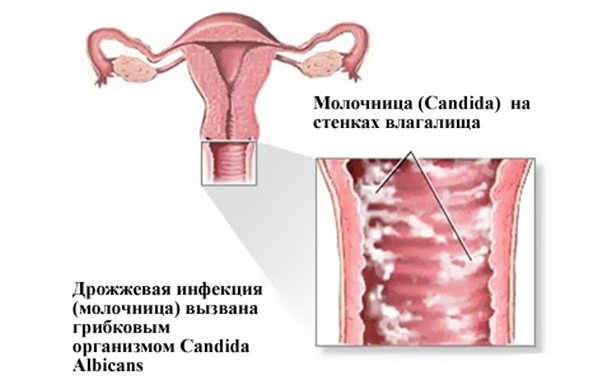Consequences of gynecological manipulations
While waiting for the birth of a child, all women undergo a medical examination several times in a gynecological chair using mirrors.
If in the first trimester of pregnancy this is necessary to collect material for various tests and monitor the general condition of the woman, then in the later stages of pregnancy, starting from the 38th week, the doctor, when examining pregnant women, assesses the degree of readiness of the expectant mother’s cervix before giving birth. Small discharge after examination by a gynecologist may occur due to mechanical damage to the mucous membrane of the vagina or cervix, which are characterized by increased sensitivity. This is due to the fact that on the eve of childbirth the mucous membrane has a softened structure, which is easily injured at the slightest touch.
https://www.youtube.com/watch?v=ytadvertise
The appearance of blood-stained discharge in this case does not cause discomfort to the woman and goes away quite quickly, within a few days.
However, there is nothing wrong with sharing your concerns and telling your doctor what happened at your next routine checkup. A timely check by a gynecologist of the condition of the cervix will allow you to accurately identify pathology and exclude the occurrence of serious complications during pregnancy.
Reasons for the appearance of discharge after a gynecological examination
Visits to specialists of this kind involve certain manipulations in the vaginal area. The appearance of bloody discharge after examination by a doctor can be the result of:
- careless use of instruments: they are used to examine the inside of the vagina, and its mucous membrane, like the surface of the cervix, is very sensitive and easily damaged;
- patient behavior: vaginal tension or fidgeting during manipulations contribute to injury to mucosal tissue;
- Taking a smear is a necessary procedure to determine the health of the genital organs; it involves collecting cells from the mucous membrane with a special instrument resembling a brush or a small brush. During its implementation, the tissues may be slightly damaged and cause spotting and bloody discharge after visiting the gynecologist;
- the beginning of menstruation: manipulations performed inside the vagina can provoke its onset ahead of schedule, as a result of which a brownish secretion may initially appear.
The above factors are usually not harmful to health. Normally, after an examination by a gynecologist, the discharge will bother you for a maximum of one or two days. If after this time the symptom does not go away, you need to seek help. It also happens that after a gynecologist, or more precisely, after his actions, there is pain in the lower abdomen, burning and itching in an intimate place without discharge.
If the discomfort does not go away after a couple of days, then you need to visit the hospital. It is possible that an infection was introduced during the doctor's examination.
We cannot exclude the possibility that the time of the appearance of the pathological secretion only coincided with the date of the examination and the reason for its appearance was not a visit to the doctor. We recommend that you study information about what discharge can be during pregnancy and what they mean in our article at the link.
Consequences of gynecological manipulations
If you have passed the 38th week of pregnancy, then your gynecologist will certainly look at you in the chair to assess the situation, namely, the readiness of the cervix for childbirth. It is customary to evaluate it depending on the softness or dilatation of the cervix, which in obstetrics is measured in fingers. “The uterus has already opened two fingers, you can start giving birth at any moment,” says the gynecologist, and you go home waiting. And in the evening you begin to “smear” - brown discharge comes from the vagina.
One of the reasons for the appearance of brown discharge before childbirth is precisely the examination of the vagina on the gynecological chair. In this case, the cervix may be slightly injured, and small traces of blood (red, brown, brown) appear on the underwear. It's not dangerous, there's no reason to worry.
Brown discharge for this reason may be observed within or 3-4 hours after examination. You can also injure the cervix during sexual intercourse: in this case, brownish discharge can be observed for 48 hours after careless sex.
When to see a doctor
If brown discharge appears as a result of the situations described above, then it does not require an emergency visit to an obstetrician-gynecologist, however, it should be understood that “spotting” can also appear in a number of other cases that are dangerous for the child and the woman herself. For this reason, in any case, you should play it safe and consult a doctor, or at least contact him by phone and explain the current situation.
In some cases, you should contact your doctor immediately:
- The appearance of discharge accompanied by an unpleasant odor
. This may indicate an infection, which is extremely dangerous for the child, especially at the end of pregnancy: the cervix is slightly open and microorganisms can easily penetrate into the uterine cavity; - The appearance of bloody discharge that is not brown or brown in color, but has a bright red color
. Such a “daub” may indicate serious complications of pregnancy: premature detachment of a normally located or presenting placenta; - Copious bleeding
. This situation also occurs as a result of pathology of the placenta and requires emergency care, because threatens the life of the child and mother. If such discharge appears, the woman should immediately call an ambulance (under no circumstances should she go to the maternity hospital on her own); - Discharge from the genital tract of any color and in any quantity, accompanied by deterioration in health or the occurrence of cramping and aching pain in the lower abdomen or lumbar region
. These symptoms, first of all, may indicate the development of labor.
Stimulation of labor
After examination by a gynecologist, spotting during pregnancy can be caused by special procedures to ensure the preservation of the structure of the cervical canal before childbirth. A woman should tell her doctor about the presence of spotting. In standard situations, sutures are removed at up to 37 weeks, which is completely painless.
Visually, the plug is a small mucous, jelly-like structure, cream-colored clot. Sometimes it has small bloody spots. The removal of the plug does not cause any unpleasant pain or discomfort in the woman. At your scheduled check-up, which takes place weekly these days, tell the doctor about what happened, and the doctor will decide on a further strategy for managing the pregnancy.
With timely treatment, childbirth can be postponed.
When a woman notices signs of a mucus plug coming off, she needs to be especially careful about her body hygiene. During this period, the birth canal is open and especially vulnerable, since it is actually not protected from the penetration of bacteria and infection.
If labor does not occur in the fortieth week, the doctor, during an examination in a gynecological chair, performs special manipulations aimed at softening the cervix. After a gynecological examination of the cervix, brown discharge often appears in case of stimulation. During pregnancy in the third trimester, this is a normal process, accompanied by nagging pain in the lower abdomen and increased tone of the uterus. In most cases, the first contractions occur within 24 hours after visiting the gynecologist with such stimulation.
Causes
During a gynecological examination, the doctor uses special instruments that allow him to give an objective assessment of the condition of the reproductive organs. However, their use often causes mechanical injury to the mucous membranes of the vagina, cervix or uterus, as a result of which small capillaries are damaged and blood begins to be released from the vagina in small quantities. As a rule, the phenomenon is observed when a doctor uses gynecological speculums, with which he accidentally damages the integrity of the mucous membranes.
If a woman has brown discharge, the reason for this may be a vaginal smear, which is taken during examination for bacteriological examination. When taking it, the upper mucous layer of the vagina is scraped, which, naturally, also leads to damage to its small vessels. But in this case, minor bleeding occurs, which stops after 2–3 hours and does not require a second visit to the doctor.
In addition, the occurrence of brown discharge occurs not only due to the negligence of the gynecologist, but also due to the fault of the woman who, upon coming to the appointment, was very worried and made unnecessary sudden movements. It should also be noted that some women have increased fragility of blood vessels and for them, every gynecologist appointment ends with the appearance of a scanty smear that is dark or light brown in color.
The occurrence of bloody or pink discharge often occurs in cases where diagnostic or therapeutic procedures are carried out during use, which also compromise the integrity of the mucous membranes of the vagina or cervical canal. For example, this phenomenon is observed after cauterization of erosion or hysteroscopy. In this case, the discharge does not end as quickly as in the cases described above. They last from several days to a week; they can also pull in the lower abdomen and clots of clotted blood may come out.
The plug comes off
If you do not associate the appearance of brown discharge with a gynecological examination, and it is getting close to childbirth, then it is obvious that this is a traffic jam. The mucus plug comes off at different times for everyone and is one of the reliable signs of imminent labor. On average, contractions begin 2-4 days after this, although it is possible that you will begin labor within 2 hours. However, obstetricians say that if the cervical mucus discharge is brown, then childbirth is almost on the nose (in a few hours).
If you notice brown discharge earlier than 2 weeks before giving birth, it is better to immediately call your doctor and let him know.
The plug may come off entirely or come out in parts. Its total volume is about two tablespoons. It looks like thick or not very mucus (under the influence of estrogen it liquefies) and can have a very different color or shade: white, yellowish, with or without streaks of blood, pink, cream, beige, brown, brown.
Not everyone's mucus plug comes off early. Sometimes it falls out during the rupture of amniotic fluid, which often happens during childbirth itself. In this case, the woman may not notice the plug coming out.
You should know that the release of the mucus plug not only portends an imminent birth, but also opens the way for microorganisms to the uterus and baby. Therefore, from the moment the plug comes out, it is necessary to eliminate any risk of infection (do not swim in stagnant water, do not have sex) and do not undertake important matters or long trips: wait for childbirth. May they pass easily and safely!
What to do if a symptom is detected?
Brown discharge that occurs in the first trimester of pregnancy can be quite dangerous. In some cases, there is a threat to the life of not only the embryo, but also its mother.
If it is possible to terminate a pregnancy, doctors prescribe bed rest and sedatives, which are allowed in such situations. Medicines are also prescribed to help stop the contractility of the uterus. Hormonal preparations based on progesterone are prescribed for any spotting up to 18 weeks of pregnancy.
In case of a pathology such as ectopic pregnancy, the woman receives urgent surgical care. During the operation, the pathological egg is removed and the consequences of its development are eliminated.
Signs of possible infection
The presence of an infection is assumed when, after the next examination by a gynecologist, not just bloody discharge appears, but a strong odor or burning sensation is felt in the genital area.
During pregnancy, purulent discharge with an unpleasant odor definitely indicates an infection or the course of the disease. This can be dangerous for both the woman and the baby.
It is necessary to monitor the appearance of elevated body temperature, weakness, and chills. You need to see a doctor as soon as possible, without waiting for your appointment date, who will conduct additional examinations and prescribe effective therapy.
https://www.youtube.com/watch?v=https:tv.youtube.com
Modern medicine has a full arsenal of necessary means, the timely prescription and administration of which can ensure the health of the baby and his mother.
What other discharge may occur during pregnancy?
Clear discharge during pregnancy is considered not dangerous. You should be concerned if they are accompanied by itching or redness.
White, dense discharge is a sign of thrush. Candidiasis not only causes a lot of discomfort, but is also dangerous. Due to the high concentration of the fungus, micro-rupture of the amniotic sac and leakage of water are possible.
Yellowish or light brown discharge may indicate that a woman is infected with ureaplasmosis, chlamydia. Green discharge with an unpleasant odor and foam indicates trichomoniasis.
Intimate relationships
Brown vaginal discharge during late pregnancy may appear not only after a doctor's examination, but also during sex.
In most cases, with a normal gestation period, with positive results of tests and examinations, there are no contraindications to sexual relations.
Intimacy during the prenatal period has a beneficial effect on the vaginal mucosa. It has a mild stimulating effect. But due to excessive activity of partners, mechanical damage is possible, which causes bleeding. In this case, the woman needs to be provided with sexual peace.
Sex should be gentle, not cause discomfort, much less pain.
Causes of bleeding
Bloody discharge scares expectant mothers more than others. Most often, they indicate that something is wrong with the mother’s body or pregnancy. Blood on underwear is a reason to urgently consult a doctor, because the risks of losing your baby in this case are very high.
Why does bleeding occur? The most common reasons include:
- Ectopic pregnancy. If the ectopic attachment of the fertilized egg was not determined before the 12th week, then by the end of the first trimester, when the fetus grows, a tube rupture may occur. This dangerous phenomenon is accompanied by heavy bleeding, but before this, spotting appears. If you do not react to them in time, the consequences can be serious, even fatal.
- Freezing of the fetus. The first 12 weeks of pregnancy are considered the most critical: the fetus may stop developing and die. Rejection of the fetus does not begin immediately, but the body recognizes the freezing of toxins and starts the process of miscarriage. The first sign of such a pathology is spotting and spotting.
- Threat of self-abortion. Blood in the discharge may appear against the background of dangerous infections that pose a threat to the baby. Scarlet marks on the underwear may indicate that the body identifies the fetus as a foreign object and tries to reject it. When there is a threat of miscarriage, in addition to the discharge, unpleasant sensations appear in the lower abdomen - nagging cramps, pain.
- Lack of progesterone. If there is a lack of “pregnancy hormone”, the likelihood of fetal rejection increases. The first signal is blood-stained mucus. You can solve the problem with the help of drugs, but you need to react quickly.
- Erosion. In the presence of pathology, a bloody “smear” usually occurs. Blood in the discharge becomes more noticeable after sexual intercourse.
The discharge may become pink after a gynecological examination. At the 12th week, expectant mothers undergo a routine examination, during which the vaginal mucosa may be damaged due to careless actions of the doctor. This happens often, because the mucous membrane becomes very sensitive during pregnancy. Drops of blood from a small wound on the mucous membrane mix with the discharge, turning it pink. This phenomenon does not pose a threat.
Characteristics of normal discharge
During the twelfth week, the hormone progesterone continues to have a great influence on the body of the expectant mother, ensuring the process of maintaining pregnancy. Discharge during this period has a thicker consistency and is larger in volume than before conception. The presence of heterogeneous particles or traces of blood in them is considered unacceptable.
Normal discharge at week 12 should meet the following basic characteristics:
- the volume of discharge is moderate, but may be increased compared to the usual amount before pregnancy;
- homogeneous consistency;
- milky or light shade;
- slightly sour smell.
The volume of vaginal discharge may increase starting from the 12th week, which is associated with hormonal changes in the body and the completion of the formation of the placenta.
In addition, very soon a mucus plug will form on the cervix, as a result of which the color of the mucus may turn white.
Pathological changes
However, not all women experience beige (milky) discharge at week 12. Some may begin to be bothered by a rotten smell and blood. The woman’s stomach feels tight and her general health deteriorates. All these signals are very dangerous, because they can be followed by a miscarriage.
Thrush
The appearance of white discharge, which is similar in structure to cottage cheese and has a sour smell, indicates the development of thrush. They are also accompanied by severe itching. Candidiasis occurs in almost every woman during pregnancy. But most often, pregnancy proceeds without complications and obvious discomfort. Since this disease is not dangerous for the child, it does not require treatment during this period. Therapy can only be carried out in the second half of the third trimester.

Thrush (candidiasis) – click to view
Sexual infections
Since many women continue to be sexually active, the occurrence of infection is acceptable. Yellow discharge at 12 weeks of pregnancy indicates the development of an infection. At the same time, the smell of rotten fish, severe itching, and fever appear. Such discharge during pregnancy indicates the presence of a serious danger that threatens the baby. After all, some infections affect the membranes, which contributes to early miscarriage. A rotten egg smell may also occur when an infection develops.
As a diagnostic test, an analysis is performed that will identify the pathogen. After this, an acceptable treatment is selected that will not affect the child’s health. This is why it is important to undergo examination before conceiving a baby; it is best if mom and dad get tested for infections 4-6 months in advance.
Remember! It is not advisable for an expectant mother to take medications in the early stages of pregnancy! Some medications can negatively affect the development of the fetus. In such cases, they try to postpone treatment to a later date.
Inflammation
Dark discharge at 12 weeks of pregnancy may indicate the presence of inflammation. Due to the fact that the inflammatory process affects the uterus, its involuntary contraction occurs, which can complicate the course of pregnancy. There is no single cure for treating this disease. Therapy is selected individually and strictly by the doctor.
Hormonal imbalance
Brown discharge at 12 weeks of pregnancy is formed due to a lack of hormone. After ovulation occurs in a woman’s body, a corpus luteum forms at the site of the burst follicle. It is responsible for the production of progesterone, which is necessary to maintain the normal course of pregnancy.

The process of ovulation of an egg (click to view)
When the concentration of this hormone is low, the uterus contracts and the fertilized egg peels off. Because of this process, a hematoma is formed between the wall of the uterus and the embryo. Given its large size, the chance that the pregnancy will survive is very small. During this period, bleeding appears, which is the main signal. If a woman consults a doctor in a timely manner, she can maintain her pregnancy. The appearance of brown discharge indicates the opening of a hematoma. In some cases, it goes away on its own without harming the fetus. Bloody discharge at 12 weeks of pregnancy may not occur if the membranes are detached.
Attention! If there is a risk of miscarriage, the woman is prescribed bed rest and complete rest. Progesterone-based medications are prescribed to help maintain the desired pregnancy.
Damage
If a woman experiences pink discharge at 12 weeks of pregnancy, this most often indicates tissue damage during the examination. During a routine examination during this period, the doctor may use a speculum, with which the condition of the cervix is assessed and a smear is taken. Due to the increased sensitivity of all membranes, it can lead to the formation of a small wound from which a few drops of blood will come out. It is they that mix with the main secretions and give this color.
Erosion
Another reason why spotting may occur during this period is erosion. With this disease, the woman does not have any pain, she is not bothered by any other symptoms. This mucus increases after sexual intercourse, and it looks like dark red stains on underwear.

Since this disease is not treated before pregnancy to avoid complications during childbirth, the appearance of such mucus is not considered a serious signal. Why isn't treatment happening? The fact is that after treatment for erosion, a scar forms on the cervix, which can cause complications in the process of its opening. In some cases, this pathology goes away on its own after childbirth.
Blood after intimate contact
Doctors do not prohibit pregnant women from continuing their intimate life if there are no direct contraindications, which include placenta previa detected by ultrasound, increased tone of the uterine walls and diagnosed pathologies of fetal development. It is better to abstain from sexual intercourse, starting from the 35th week of gestation, if immediately after intercourse a woman begins to have spotting dark brown discharge and pain in the lower abdomen.
Experts insist on sexual abstinence for the last two months of pregnancy if you have the following health problems:
- multiple pregnancy (the patient is carrying two or more children);
- leakage of amniotic fluid;
- pronounced discharge of the mucus plug;
- unexpected dilatation of the uterine cervix, which occurred long before the expected date of birth;
- cervical canal insufficiency (a pathology in which the cervix is unable to remain closed, and the risk of premature birth increases);
- discharge from the genital tract with an unpleasant odor and unnatural color, with foreign inclusions - yellow, brown, greenish, white with a cheesy consistency;
- false contractions.
If the discharge began during pregnancy just before childbirth, immediately after sexual intercourse, it means that the partners chose an uncomfortable position that traumatized the cervix. You should seek medical help and find out whether the discharge really warns of the onset of labor and labor, or whether it will go away with sexual rest.
Many experts even advise intimate intercourse for women carrying a child longer than 39-40 weeks. Sexual contact promotes the release of hormones that have a positive effect on the condition of the fetus.
In many cases, immediately after sex, a woman experiences spotting, and after a few hours the process of labor begins with active contractions.
Causes in the third trimester
The problem in women can also be observed in the 3rd trimester of pregnancy - from 30 to 41 weeks. A symptom from 36 to 38 weeks may indicate the onset of premature labor. If a pregnant woman consults a doctor in a timely manner, she will have every chance of giving birth to a healthy child, no different from her peers in terms of physical and mental development.
The main reason for the appearance of reddish or brownish leucorrhoea in the later stages is the passage of the mucus plug. Its main goal is to protect the child and amniotic fluid from infection. It is not necessary that labor will begin immediately after it leaves.
Usually the sign appears 1-2 weeks before the baby is born. It is urgent to call emergency help if the bloody secretion is accompanied by cramps in the abdominal area. The same rule applies to the discharge of amniotic fluid. Without them, a child is not able to live more than 12 hours.
What does it mean that labor is imminent?
Many expectant mothers experience brown discharge in later stages. Before birth, they may be accompanied by the release of water. This state indicates that the process has begun. You can be sure that you will meet your baby within a few hours. Waste water can have different volumes. For some women they simply leak, while for others they pour out completely. In both cases, you cannot remain idle. Don't expect everything to go away on its own. You are giving birth!
Often the water recedes immediately after the plug is released. Therefore, you should monitor your well-being if mucous brown discharge is detected. Before giving birth in such a situation, contractions may begin, which often happens precisely after the water is poured out. You need to take everything you need as soon as possible and go to the maternity hospital.












